7 Web Design Trends to Say Goodbye To
The world of web design is constantly evolving. Styles and techniques that were once hot can quickly become outdated as new trends emerge. As a web designer, it's crucial to stay on top of the latest trends and know when to move on from specific design elements.
In this article, we'll look at seven web design trends that have had their time in the spotlight but are now past their prime. These styles and techniques were once more practical and appealing. While they may still be seen on some sites, they feel dated and are best avoided if you want to keep your designs feeling current.
We'll examine why these trends became popular in the first place when they hit their peak and why it's now time to phase them out. We'll also suggest some newer alternatives you can incorporate instead to keep things fresh. With these seven expired web design trends out of the way, you'll better grasp what works in 2023 and beyond when putting together modern, eye-catching websites.
If you want an appealing and trendy website, some design trends are just a no-go. So, let's look at the seven web design trends to say goodbye to!
Table of Contents
1 – Flash intros and splash pages
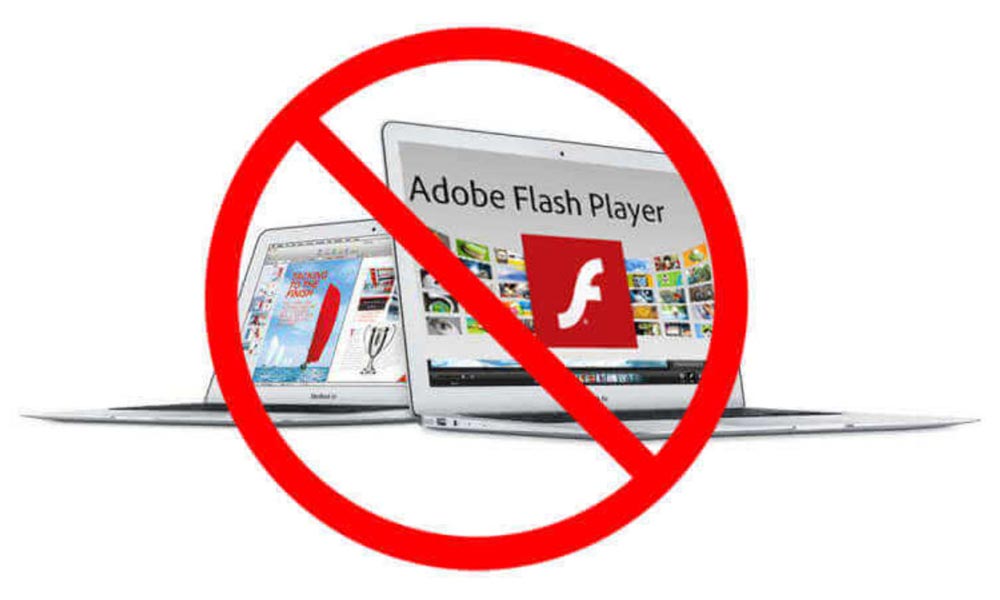
Flash intros and splash pages were once a popular trend in web design. They aimed to captivate visitors with flashy animations and graphics before leading them to the main website. However, as the digital landscape evolved, so did user expectations and preferences. Today, users demand instant access to the information they seek, and delays lead to frustration and a negative user experience.
One of the main issues with Flash intros and splash pages is the significant increase in bounce rates. When users encounter a flashy introduction offering little value, they are likelier to abandon the site altogether. Moreover, with the rise of mobile usage, these elements pose compatibility challenges and often result in longer loading times. Thereby further exacerbating user frustration! Since responsive design is particularly crucial in today's mobile-centric world, it's a compelling reason why flash intros and splash pages are one of the web design trends to say goodbye to. Websites must adapt to various screen sizes and devices to provide a seamless user experience. Regardless of whether visitors access the site from a desktop computer, tablet, or smartphone!
Another drawback of Flash intros and splash pages is the adverse impact on search engine optimisation (SEO). Search engines rely on crawling and indexing website content to determine their relevance for user queries. However, Flash content is complex for search engines to read and understand, leading to lower search rankings for websites that heavily rely on such elements. In contrast, websites that adopt a more user-friendly and content-focused design tend to perform better in search results.
As web design trends shift toward simplicity, speed, and accessibility, businesses must rethink their approach. Modern web design should prioritise more responsive layouts rather than relying on outdated Flash intros and splash pages. Therefore, User-centred design principles become the focal point, ensuring visitors quickly find the information they need without unnecessary barriers.
2 – Overly complex navigation menus
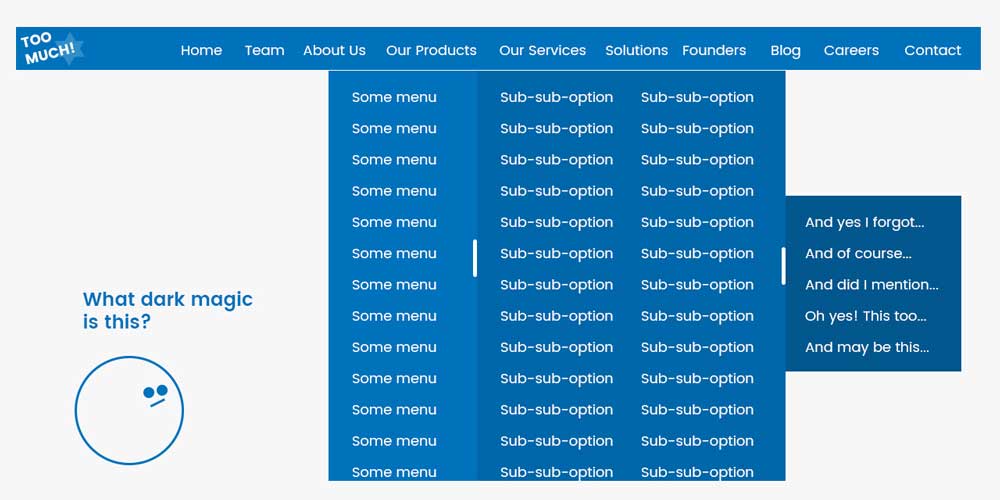
Overly complex navigation menus have long been a challenge in web design. These convoluted menus can confuse users and hinder their ability to find the information they need, which is already a compelling enough reason why they are among web design trends to say goodbye to. Even AI in graphic design steers away from complex navigation menus, recognising the importance of user-friendly interfaces!
When visitors encounter intricate navigation structures, they may become overwhelmed and opt to leave the website altogether too. And high bounce rates and low engagement metrics can negatively impact a site's SEO performance, as search engines interpret these signals as a lack of relevancy or user satisfaction.
Instead, designers should aim for simplicity and clarity in navigation, guiding users seamlessly through the website. Intuitive menus, concise labels, and well-organised categories make it easier for users to explore and interact with the content.
Responsive design and straightforward navigation ensure the user experience remains consistent across various devices, enhancing user satisfaction and search engine visibility. By prioritising user-centred design principles and avoiding overly complex navigation menus, websites can create a pleasant browsing experience that keeps visitors engaged and returning for more.
Besides, complex navigation menus confuse humans and pose challenges for AI. Artificial intelligence relies on structured data and clear pathways to understand the website's layout and content. When faced with convoluted navigation, AI may need help to analyse and interpret the site effectively, potentially leading to inaccurate assessments and recommendations.
Furthermore, the rise of voice search and virtual assistants further underscores the need for straightforward navigation. Users who interact with websites using voice commands expect quick and precise results! So, complex menus can misinterpret user intent, providing irrelevant or inaccurate information through voice-based interactions.
3 – Autoplay videos and audio
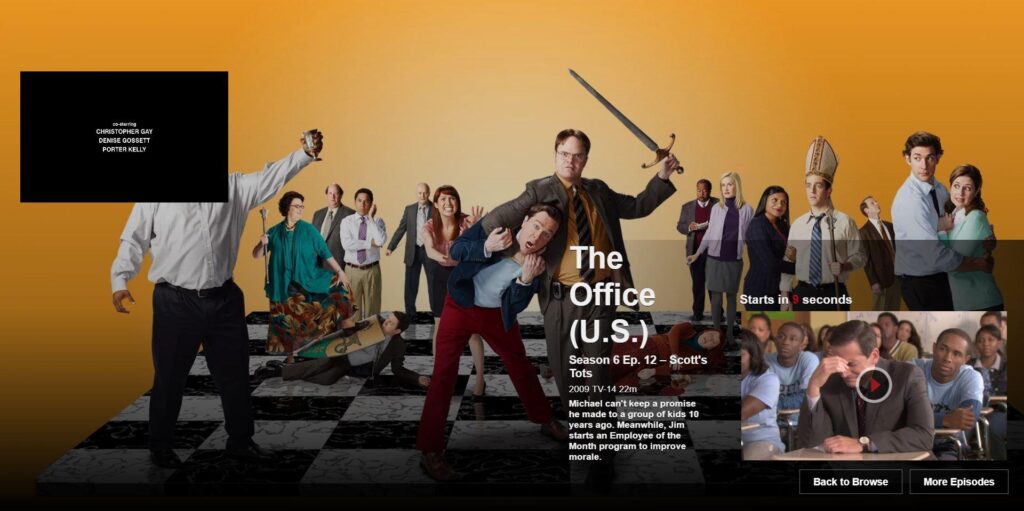
Autoplay videos and audio on websites have always been a polarising issue. Some people love them, while others have always seen them as a nuisance. Still, nowadays, while exciting videos and audio are great, even as part of startup marketing, forcing them on your site's visitors is not the way to go. Autoplay content can lead to a jarring and disruptive user experience and might not align with the user's intentions!
Such intrusiveness quickly annoys visitors and makes them leave the site, contributing to higher bounce rates and lower engagement metrics. And we've already mentioned why high bounce rates are alarming for you from every possible perspective!
Additionally, autoplay videos and audio can be exceptionally bothersome for mobile users with limited data plans. That is because it consumes their bandwidth without their consent! To avoid these pitfalls, web designers should prioritise user choice and control.
So, implementing opt-in mechanisms for video and audio content empowers users to decide when they want to engage with multimedia elements is the preferred option, enhancing the overall user experience. This user-friendly approach respects visitors' preferences and helps create a positive impression of the brand!
Incorporating video and audio strategically, such as allowing users to play media by clicking on a preview or a play button, encourages active engagement and keeps users in control of their browsing experience instead.
Furthermore, optimising multimedia content for faster loading times and compatibility across devices is also necessary. With mobile usage rising, ensuring that videos and audio seamlessly play on smartphones and tablets enhances the site's accessibility and user satisfaction.
By striking the right balance between captivating content and user autonomy, websites can create an inviting and enjoyable environment that encourages visitors to stay, explore, and return for more. So, autoplay videos and audio are one of the web design trends to say goodbye to, and we should instead embrace a user-centric web design strategy that caters to the diverse preferences of our audience.
4 – Stock photography overload

Stock photography overload can harm a website's authenticity and brand identity. While stock images offer convenience and a vast selection of visuals, they often lack the uniqueness and genuine appeal that original photos bring. So, using generic stock photos found on multiple websites can dilute a brand's message and fail to establish a solid visual identity.
In contrast, creating your photo content allows you to tailor the images to your brand's tone and personality. It provides an opportunity to showcase your products, services, and team members authentically and relatable. Authenticity is a significant driver of trust and credibility, and original photos can go a long way in building a solid connection with your audience.
Moreover, original photos can be optimised for your website's design and layout, ensuring a seamless and cohesive visual experience. Stock images may not always align perfectly with your site's colour scheme or composition, leading to a disjointed look that could deter visitors from engaging with your content.
From an SEO perspective, original images can also improve search rankings. Search engines value unique and relevant content, including original photos, as it demonstrates a commitment to providing valuable information to users.
Creating your photo content doesn't necessarily require professional equipment or extensive photography skills. With the advancements in smartphone cameras and user-friendly photo editing tools, even beginners can produce high-quality images that suit their brand's style.
So, while there are many benefits of website personalisation, such as it lets you make it reflect your brand, stock photography does not reflect this! If you want genuine photo content, it's always better to make it yourself.
5 – Flash-based websites
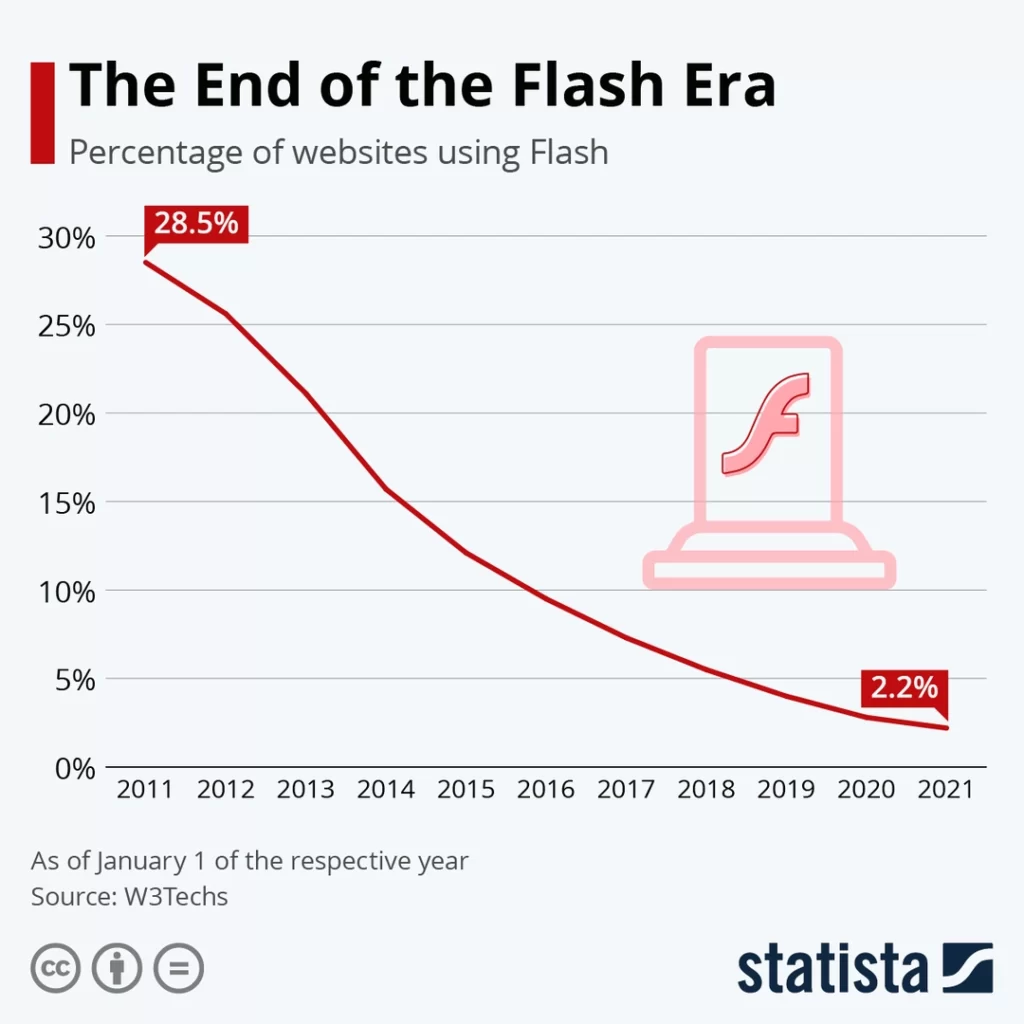
Flash-based websites were once famous for their interactive and visually appealing elements. However, times have changed, and these websites have become outdated and problematic. For example, flash content requires a plugin, which many modern browsers no longer support, leading to compatibility issues and a poor user experience.
Mobile devices, in particular, struggle to display Flash correctly, making it even more crucial to move away from this technology. From an SEO perspective, Flash content is complex for search engines to crawl and index, hindering the website's visibility in search results.
In addition to these technical drawbacks, Flash content is not accessible to users with disabilities, as screen readers and other assistive technologies may have difficulty interpreting the content. So, to ensure inclusivity and compliance with accessibility standards, it is essential to transition to more modern and compatible web technologies.
Embracing HTML5, CSS, and JavaScript allows for greater flexibility anyway, which leads to improved performance, and enhanced user experience. By migrating from Flash-based websites to responsive and accessible designs, businesses can meet today's users' needs and improve their search engine visibility and overall online presence!
6 – Infinite scrolling without pagination

Infinite scrolling without pagination is a detrimental trend in web design, providing users with a supposedly seamless browsing experience. Unlike traditional pagination, where users click through separate pages, infinite scrolling allows content to load as users scroll. While this feature can be visually engaging and immerse users in the content, it has some severe drawbacks.
One primary concern with infinite scrolling is that it can overload information. Without clear divisions between content sections, users might struggle to track where they are on the website. And they will find it challenging to locate specific information. Moreover, users feel frustrated or overwhelmed without a visible progress indicator or a way to navigate a particular section.
From an SEO perspective, infinite scrolling can also impact how search engines crawl and index content. Unlimited scrolling pages tend to have longer load times, and search engines may be unable to access all the content effectively, leading to potential indexing issues and reduced search visibility.
Implementing infinite scrolling with careful planning and user experience in mind is crucial to address these challenges. Providing clear and intuitive navigation cues, such as a “back to top” button or a fixed navigation bar, can help users orient themselves and navigate the content seamlessly. Additionally, incorporating a “load more” button or lazy loading technique to reveal additional content can improve the user experience.
Combining infinite scrolling with traditional pagination might be a viable solution for websites with significant content. By providing both options, users can choose their preferred way of exploring the content, striking a balance between an immersive experience and easy navigation.
When done right, infinite scrolling without pagination can enhance user engagement and encourage people to explore more content. However, it's essential to be mindful of potential challenges and implement the right features to ensure a positive experience.
7 – Cluttered and overly busy designs
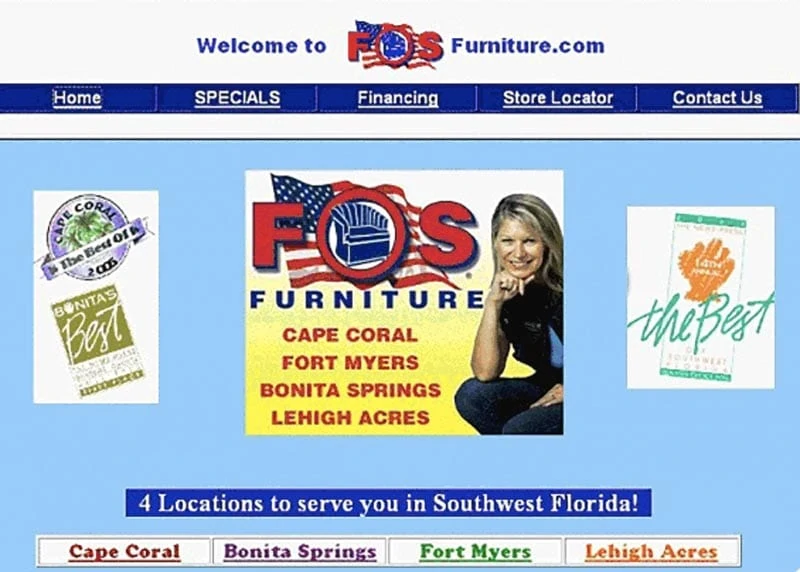
Nowadays, it's agreed that cluttering your pages is not considered creative web design! Cluttered and overly busy designs easily overwhelm visitors with excessive elements, making it difficult for them to focus on essential content. And when users encounter a messy website, they may feel visually bombarded and struggle to find what they're looking for. That is, in fact, remarkably similar to poorly implemented infinite scrolling in this regard.
Additionally, cluttered designs can create a sense of unprofessionalism and lack of credibility, potentially driving customers away. So, to create a positive experience and improve SEO, prioritise clean and organised layouts with ample white space.
By optimising for simplicity and readability, websites captivate their audience, encourage longer visit durations, and ultimately boost search engine rankings. So, embrace the less-is-more approach and let your content shine through an uncluttered, user-friendly design. A design that will leave a lasting impression on your visitors!
Remember, a clutter-free website enhances user experience and reinforces your brand's professionalism and reliability. When users can easily find what they need, they are more likely to stay engaged and explore further. Thereby leading to increased time spent on the site and a higher likelihood of conversion.
Doing away with the web design trends to say goodbye to
As we've seen, web design is an ever-evolving field. Trends come and go, and what's hot this year may be obsolete the next. While innovation is great, it's wise to be selective about adopting new fads. The trends discussed here have been in the spotlight but are now past their prime.
Clinging to outdated techniques that no longer align with user needs or business goals wastes valuable time and resources. By staying current on best practices and letting go of tired trends at the right moment, designers can create experiences that feel fresh, focused, and forward-thinking.
The web is constantly changing, but practical design fundamentals remain timeless. Clean layouts, easy navigation, engaging content, visual hierarchy, and meaningful interactions will always be in style. Rather than chase short-lived trends, incorporate timely design elements supporting core usability principles.
By saying goodbye to the trends on the way out while embracing new ideas judiciously, designers can craft cutting-edge yet classic websites and apps. The ultimate goal is connecting with users and elevating the brand – not winning design awards or checking off trendy boxes. Keep these priorities in mind, and you'll always be fashion-forward in the best sense.
